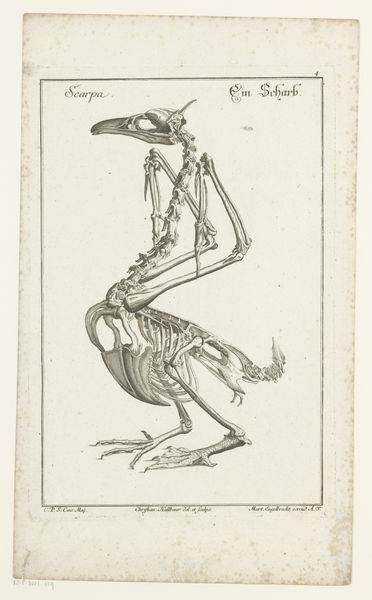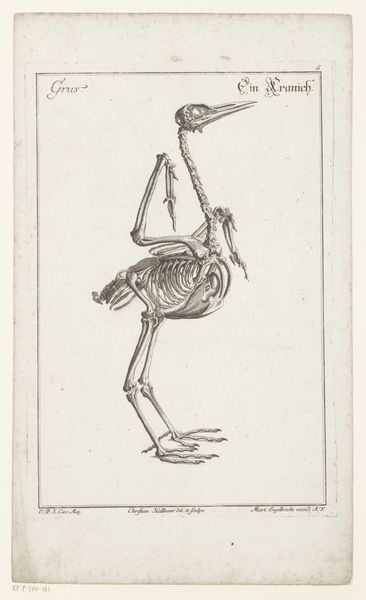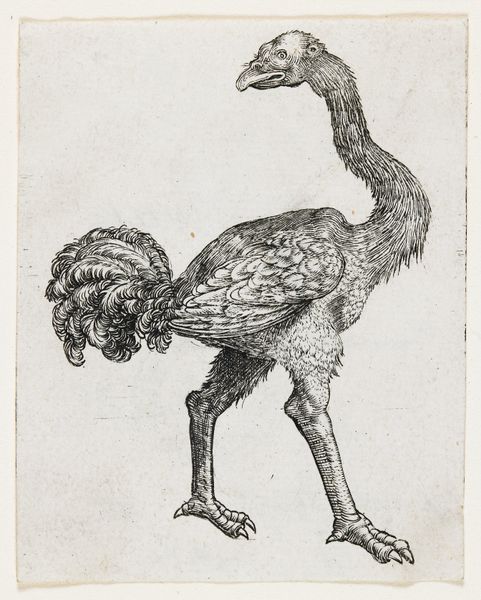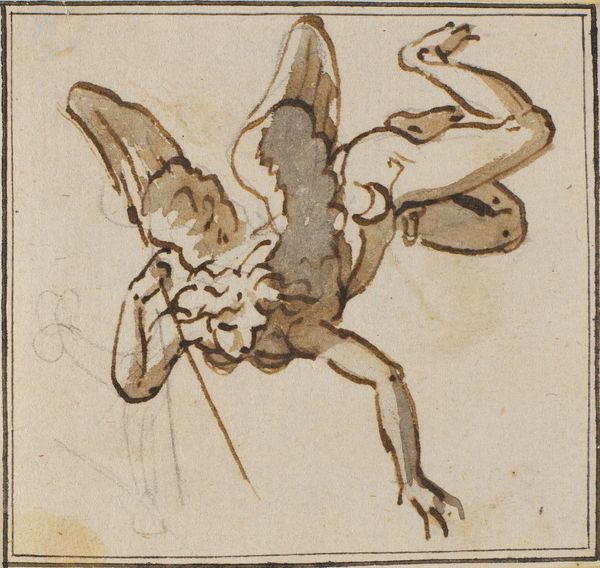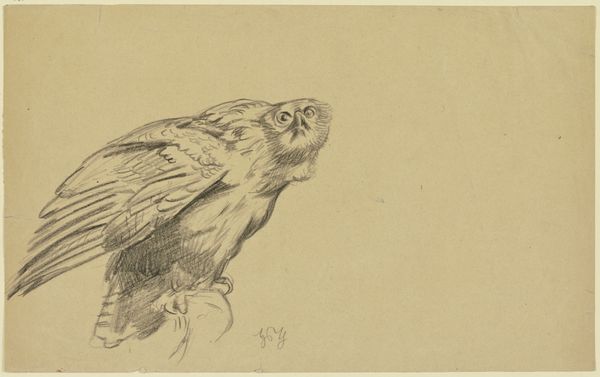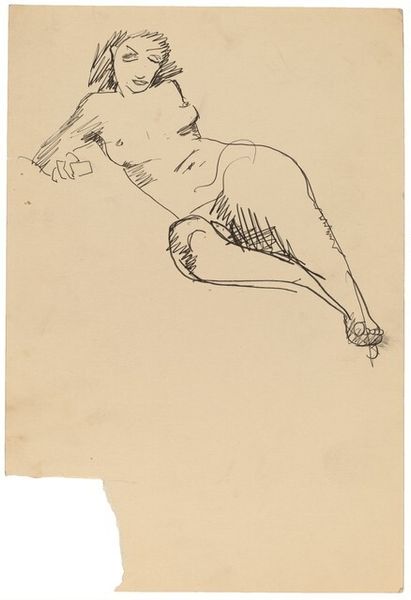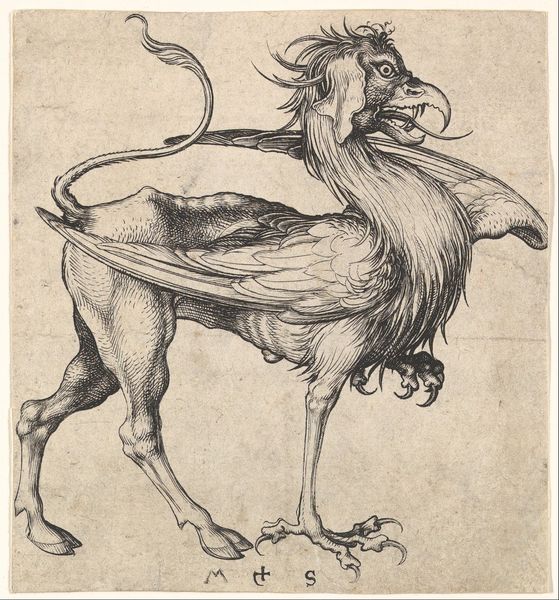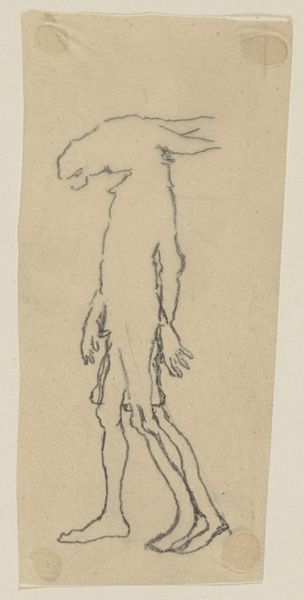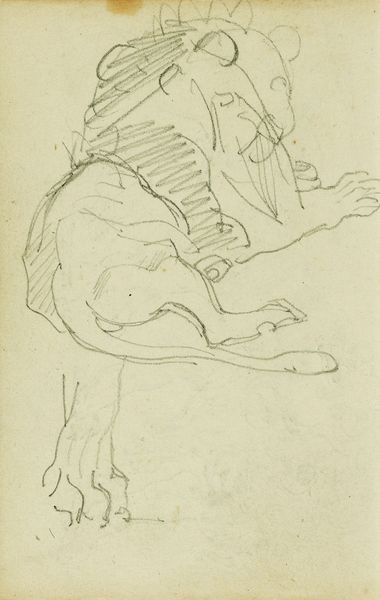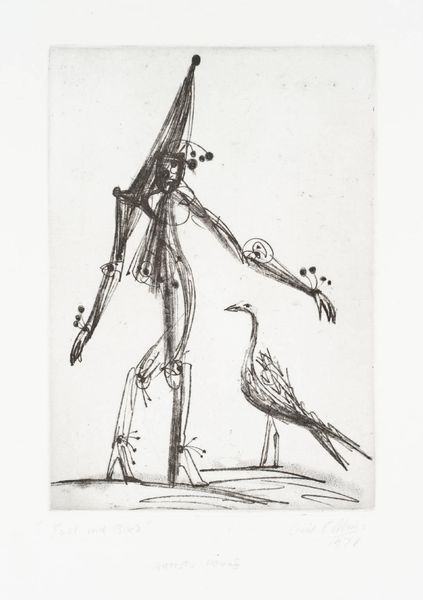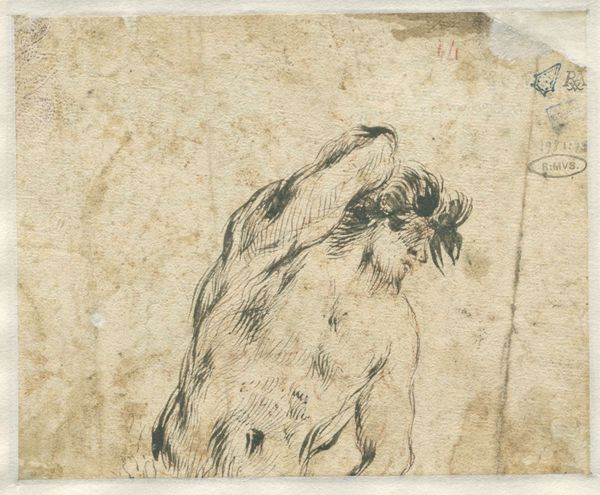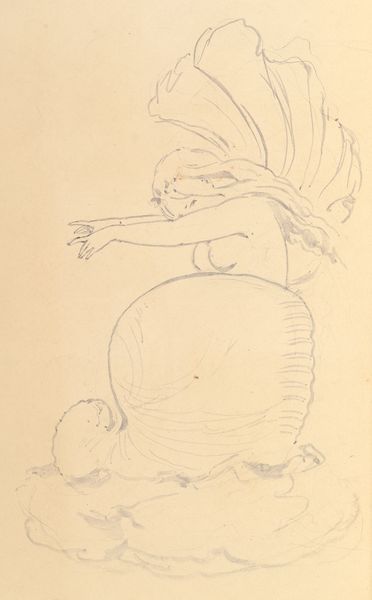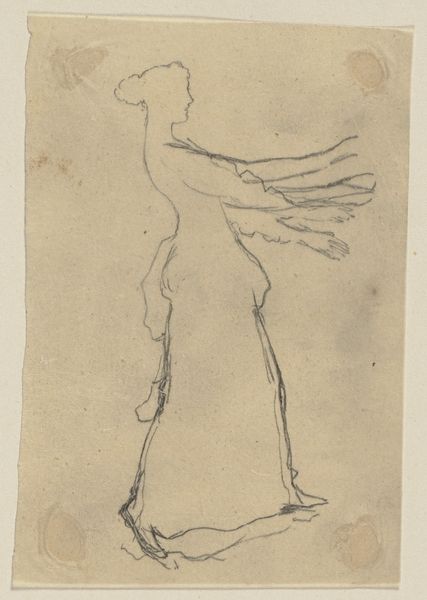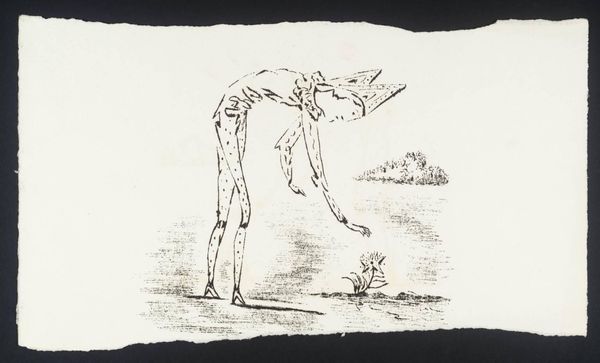
Motiv fra et østgrønlandsk sagn (Et fuglevæsen med barnehoved. Den ene af Andreassen-familiens to familietupilakker) 1927 - 1928
0:00
0:00
drawing, pencil
#
drawing
#
fantasy-art
#
figuration
#
pencil drawing
#
pencil
Dimensions: 111 mm (height) x 135 mm (width) (billedmaal)
Curator: This pencil drawing by Kaarale Andreassen, dating from 1927 to 1928, is entitled "Motif from an East Greenlandic Legend." It's a study of a tupilak—a mythical being created by shamanistic practices. What are your first impressions? Editor: My first impression is the unnerving tension between vulnerability and monstrosity. The creature is rendered with a simplicity that belies its unsettling presence. Curator: Indeed. Andreassen, of the Andreassen family, rendered two such family tupilaks during this period. He was working in a time when Inuit traditions were under pressure from increasing colonial presence and Christian missionary work. These drawings, therefore, become potent symbols of cultural preservation and resistance. Editor: The lines are sparse yet effective, especially in depicting the wings and elongated limbs. The overall composition focuses intensely on the figure itself, and it is quite disturbing, making the materiality even more poignant; the simplicity of the graphite really underscores the bareness of the figure's plight, its quiet struggle for representation on this tan paper. Curator: It’s vital to remember the spiritual significance of tupilaks in Inuit culture. They were created as avenging spirits to harm enemies. Andreassen’s drawing not only documents these beliefs, but arguably critiques the social disruption that threatened their very existence. We might even see this figure as a representation of displaced cultural identity itself. Editor: I agree. However, it’s interesting to observe how the artistic form, devoid of unnecessary embellishment, forces us to confront the elemental nature of fear and power, as communicated through proportion, contrast and fine detailing. There is so much dynamism embedded into such relatively simple markings. The figure stands defiantly, though somewhat vulnerable. Curator: Absolutely. The drawing serves as a crucial document that captures cultural anxiety, yet re-asserts the enduring strength of Indigenous belief systems. It prompts vital discussions about cultural appropriation and power dynamics in a colonial context. Editor: I leave with a newfound appreciation for how simplicity in form can powerfully amplify complex layers of meaning. It reminds us to seek not just the image, but what has brought this image into being.
Comments
No comments
Be the first to comment and join the conversation on the ultimate creative platform.
